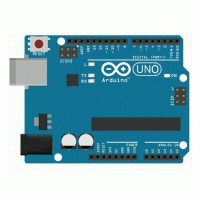Microchip launched a new generation of ATtinys. Is it worthwhile to consider them for your next DIY project?
Continue readingCategory: Insight
Something you have not known before

MCU Reboots: Why Do They Happen?
The featured picture of this blog post is by rawpixel.com on Freepik.
AVR MCUs sometimes appear to reboot without you having pressed the RESET button. Is that a sign of resilience or of looming danger? And how to find the root cause?
Continue reading
Drifting in the Flow of Time
The featured image of this blog post has been generated by Stable Diffusion.
What happens if you take a dozen clocks and throw them into the flow of time?
Continue reading
ATmega328P: Fake or Real?
The featured image of this blog post is by PublicDomainPictures from Pixabay.
Recently, I bought some ATmega328P-PU (DIP packages) chips in China and was concerned that they might be counterfeit, given that three years ago some ATmega328P clones, which did not support nano-power, had been found on Pro Mini boards. The first check looked as if they were fake chips, but apparently, they were the real thing. but they seem to work fine.

The Return of the Y2K Bug
The featured image of this blog post is based on a picture by JL G on Pixabay
If you are old enough, you probably remember the Y2k bug. Now, mankind should have learned from it, right? Wrong!
Continue reading
Parasitic Power Supply
The featured image of this post is by Emphyrio on Pixabay
In parasitic power supply mode, a device sucks its juice from a data line instead of from the power rail. This can be intended or unintended. In the latter case, all sorts of funny things can happen.
Continue readingMake it Fail
(David J. Agans)
The quote is from Dave’s book Debugging: the 9 indispensable rules for finding even the most elusive software and hardware problems, which I recommend to everybody who has to debug a technical artifact.

Fixing Problems … Using Super-Global Variables
Another xkcd comic that hits the spot. Except, with my new hardware debugger, this is the past 😎. Recently, I debugged one of my electronic geocaching gadgets and was positively surprised how easy it was to figure out ones own mistakes and to come up with the right fix.
Continue reading
That’s One Small Step for a Man, One Giant Leap for a Debugger: On Single-Stepping and Interrupts
The featured image of this post is by WikiImages on Pixabay
You want to make a single step in your program, but the debugger takes you to some unknown area of the program. This was, in fact, my first experience when I tried out Microchip’s MPLAB X IDE debugger on the innocent blinking sketch. Is this a bug or a feature?
Continue readingThere has never been an unexpectedly short debugging period in the history of computers
… but the periods might have become shorter with the right tools

